Menu

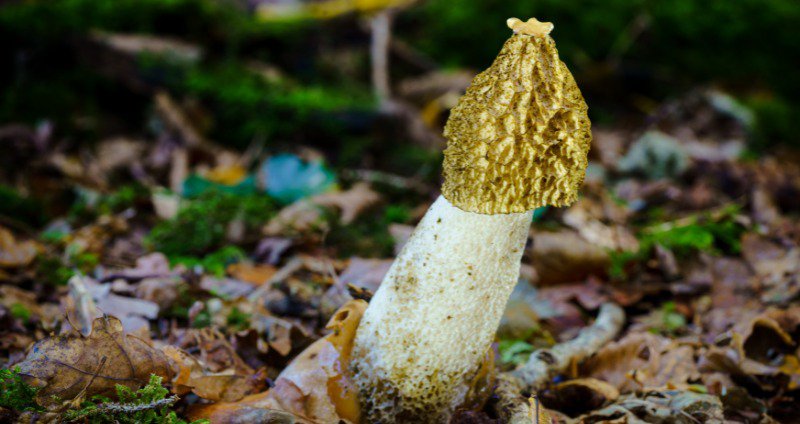
Stinkhorn mushrooms are a fascinating group of fungi that have captured the attention of different foragers, enthusiasts, and scientists over the years.
These Phallus mushrooms are easily recognized by their distinct phallic shape and a smell that’s so bad, it even earned them the name “stink” horn.
Stinkhorn mushrooms are some of the weirdest mushrooms in the world and possess a number of fascinating features and adaptations that we’ll dive into in this article.
There are over 70 different species of stinkhorn fungi, but let’s focus on the genus Phallus. This genus includes the famous Phallus impudicus also known as the “common stinkhorn.”
Other phallic fungi that we’ll touch on include Phallus indusiatus (veiled stinkhorn) and Phallus ravenelii (Ravenel’s stinkhorn).
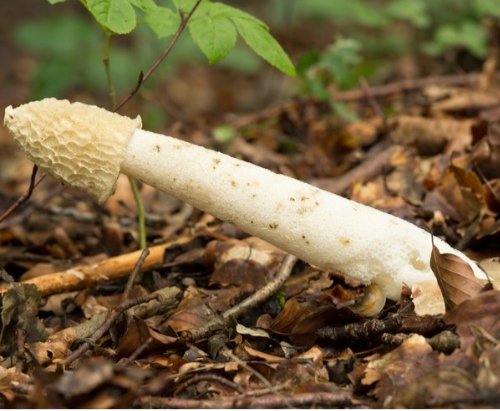
Phallus impudicus earned its description as “the common stinkhorn” because it’s one of the most frequently encountered widespread species of phallic fungi in most parts of the world.
The stinkhorn mushroom grows in temperate regions, including North America, Europe, Asia, and parts of Africa.
These regions experience warm and humid conditions either throughout the year or at certain times of the year, creating a conducive environment for the mushroom to thrive.
Stinkhorns are saprobic, meaning they feed on dead or decaying organic matter. If you have dead tree logs or even mulch in your garden, you may see these mushrooms growing on them, especially in rotting moist places.
Other than growing on decaying organic matter, they prefer damp, well-shaded areas with rich, organic soil.
From their shape to their mode of reproduction, stinkhorn fungus have bold, distinctive features that set them apart from other types of mushrooms.
They include:
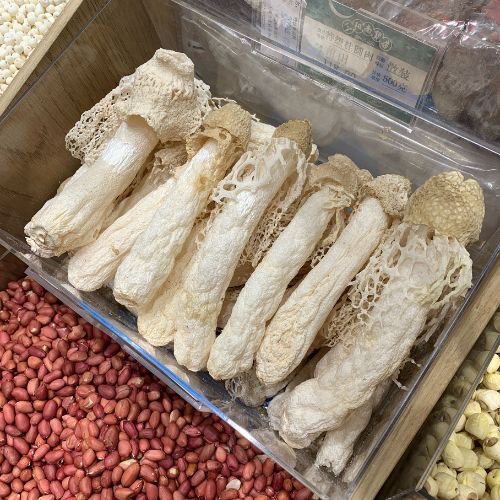
While most people don’t love the presence of stinkhorn fungus in their gardens because of their foul smell, these mushrooms offer value on several fronts.
They play an important role as decomposers in their ecosystems, helping to clean up a natural environment. They do this by feeding on dead or decaying organic matter.
They’re also edible, but because of their foul odor, most people prefer not to eat them. However, the immature white egg is odorless and that's where their delicacy lies. Adventurous mushroom lovers can eat the immature stinkhorn raw or fried.
Sometimes, people develop venous thrombosis [1], a condition where a blood clot forms in a vein. A recent study has found that extracts from Phallus impudicus may help reduce the chance of the condition occurring by aiding in the prevention of clotting [2].
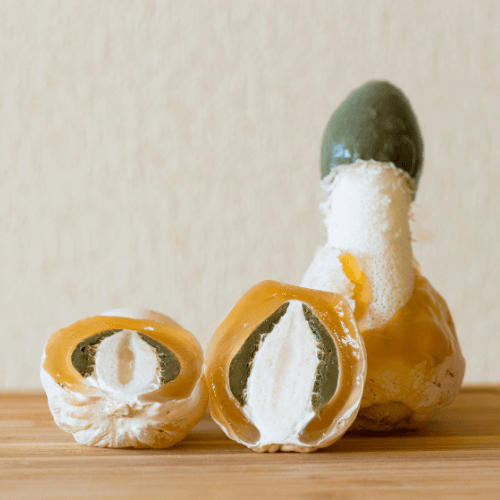
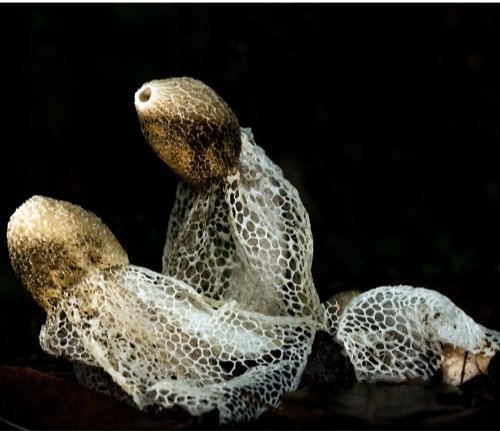
The veiled stinkhorn, also known as the bamboo fungus because of its fondness for growing near bamboo trees, is another intriguing species of phallic fungi.
The veiled stinkhorn mushroom typically thrives in tropical regions such as Asia, Africa, Australia, and the Americas.
The tropics are warm throughout the year, creating the perfect environment for this funky, lacy tropical stinkhorn fungus to survive.
Like the common stinkhorn, the veiled stinkhorn favors woodlands and gardens that have rich soil and well-rotted mulch.
Phallus indusiatus has an additional feature that separates it from the other stinkhorn species.
The feature is a well-designed, elegant white net that gracefully falls close to the forest floor. It’s from this feature that this stinkhorn mushroom adopts its famous name, the veiled stinkhorn.
Other names relating to its net include:
Like the common stinkhorn, it has a white stalk but the veiled stinkhorn’s stalk can grow up to 25cm. It also has a greenish conical-shaped cap covered in slime with spores [3].
Although the mushroom is more attractive when compared to most of the other species, it still shares the awful, foul smell that other stinkhorns have.
Interestingly, both the smell and the veil work towards the same goal: to attract flying insects in the hopes of getting help dispersing their spores.
The veiled stinkhorn mushroom is edible, especially when young—before it starts producing a foul odor.
In both ancient and modern China, veiled mushrooms are regarded as a highly prized delicacy as they are believed to nourish the lungs and improve sleep [4].
This mushroom, like the others, contains compounds such as polysaccharides that can help support a healthy response to inflammation.
They’re also good decomposers of dead organic matter. They absorb nutrients from the organisms they’re decomposing, similar to the dune stinkhorn or sand stinkhorn fungus found in certain coastal regions.
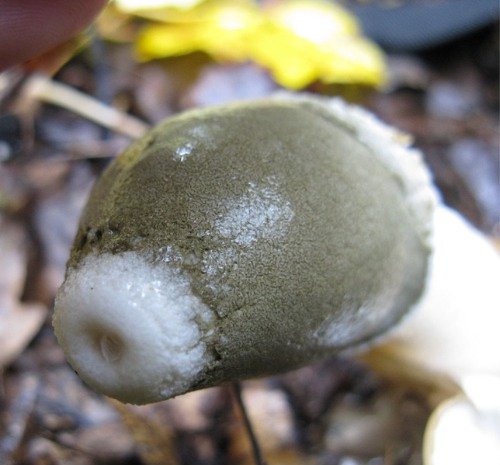
Discovered by Henry William Ravenel in 1846, Phallus ravenelii shares most of its characteristics with other phallic fungi (5).
This species of stinkhorn is found in eastern North America and appears most often between August and October.
Because of its saprobic nature, Ravenel’s stinkhorn mushroom can be found growing in habitats with plenty of dead wood debris. This mushroom is also fond of company and, therefore, will mostly be found in groups.
The color of the egg-like structure that Ravenel’s stinkhorn emerges from can either be pink or lavender, unlike the normal white that other stinkhorns have.
Often, Ravenel’s head/cap has an opening at the top that has a small white ring. It’s referred to as the mouth.
Like other phallic fungi, Ravenel’s stinkhorn mushroom is considered edible but with one caution: when it is young. This is to avoid the strong smell associated with the mature version.
Ravenel’s stinkhorn mushroom serves as a good decomposer in the ecosystem by helping break down dead organic matter.
It is also considered a delicacy, especially when it’s immature and hasn’t yet started producing the stinkhorn mushroom’s signature foul odor. The immature stage is typically the egg stage.
When ingested, Ravenel’s stinkhorn is believed to offer health benefits like other mushrooms. They include supporting the immune system and a healthy response to inflammation.
The following table compares common stinkhorn mushrooms to other phallic fungi.
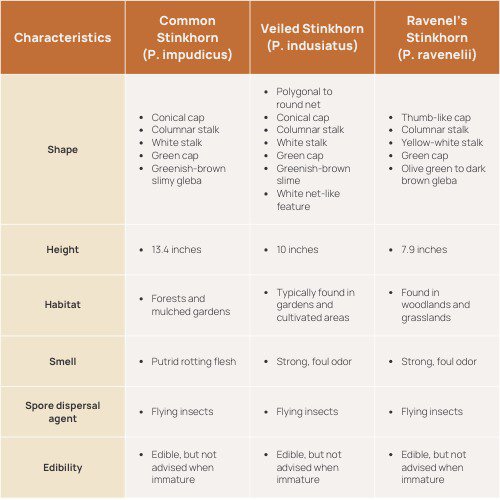
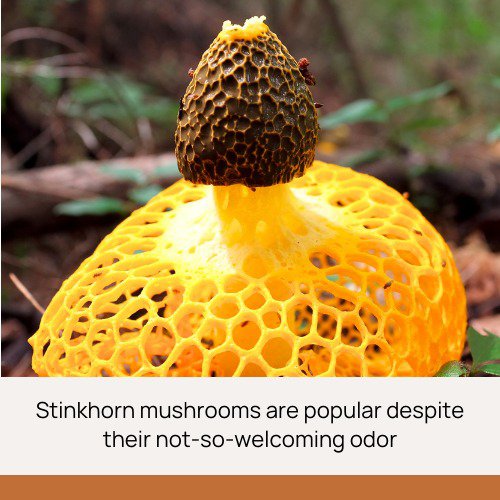
Mushrooms have been part of man’s diet for a long time, and the nutrients our bodies get from these delicacies go a long way in supporting our health. It’s important to take the time to understand these fascinating fungi to make the most of what they have to offer.
At Real Mushrooms, we understand that getting access to mushrooms in this age may be a hassle, especially if you're a city dweller.
Our goal is to make it easier for people to access the potential health benefits of functional mushrooms by offering a variety of mushroom supplements made from real, organic mushrooms.
Explore our mushroom FAQs today for more information about our line of mushroom products and how they can support your well-being.

Disclaimer: The information or products mentioned in this article are provided as information resources only, and are not to be used or relied on to diagnose, treat, cure, or prevent any disease. This information does not create any patient-doctor relationship, and should not be used as a substitute for professional diagnosis and treatment. The information is intended for health care professionals only. The statements made in this article have not been evaluated by the Food and Drug Administration. Any products mentioned are not intended to diagnose, treat, cure, or prevent any disease. The information in this article is intended for educational purposes. The information is not intended to replace medical advice offered by licensed medical physicians. Please consult your doctor or health practitioner for any medical advice.